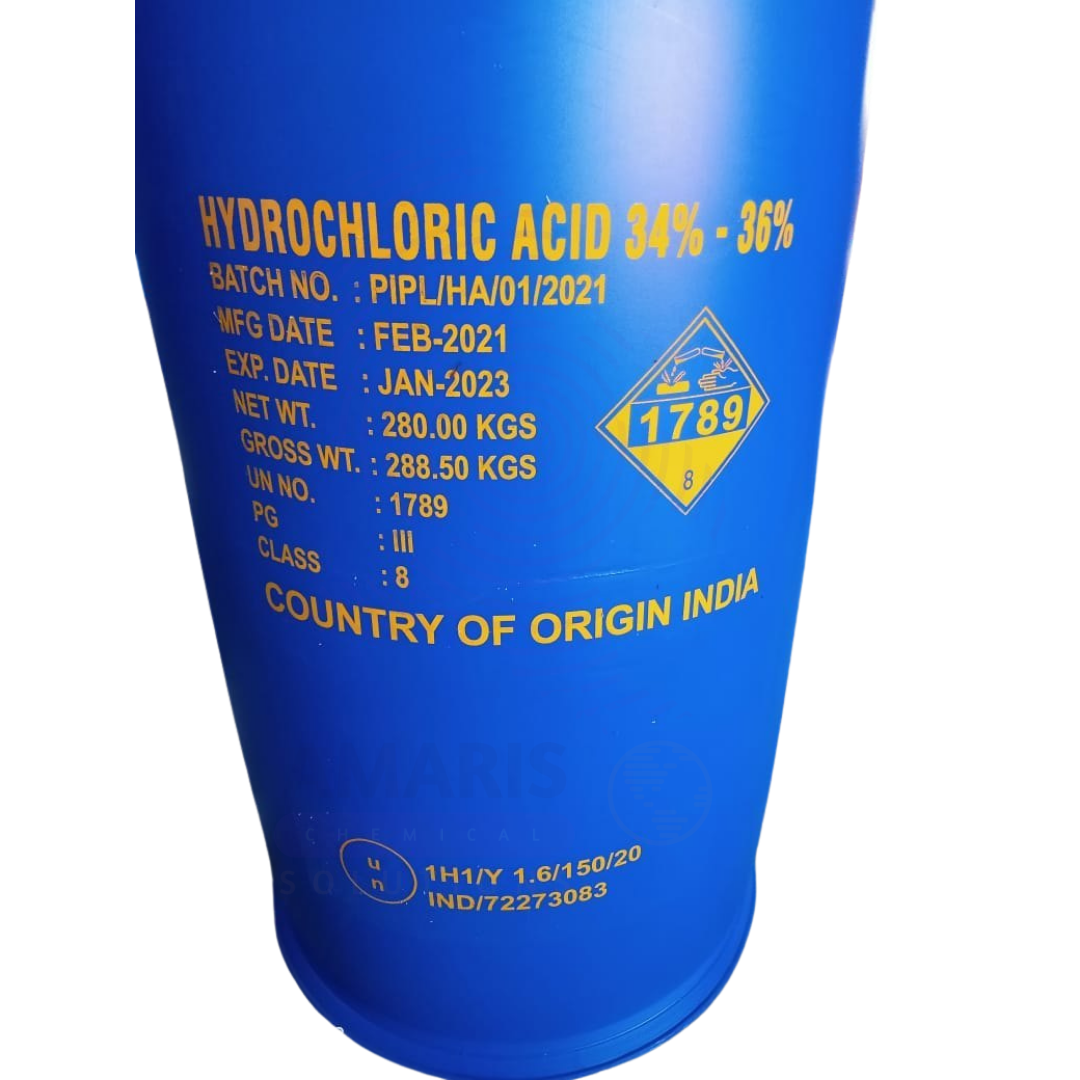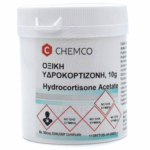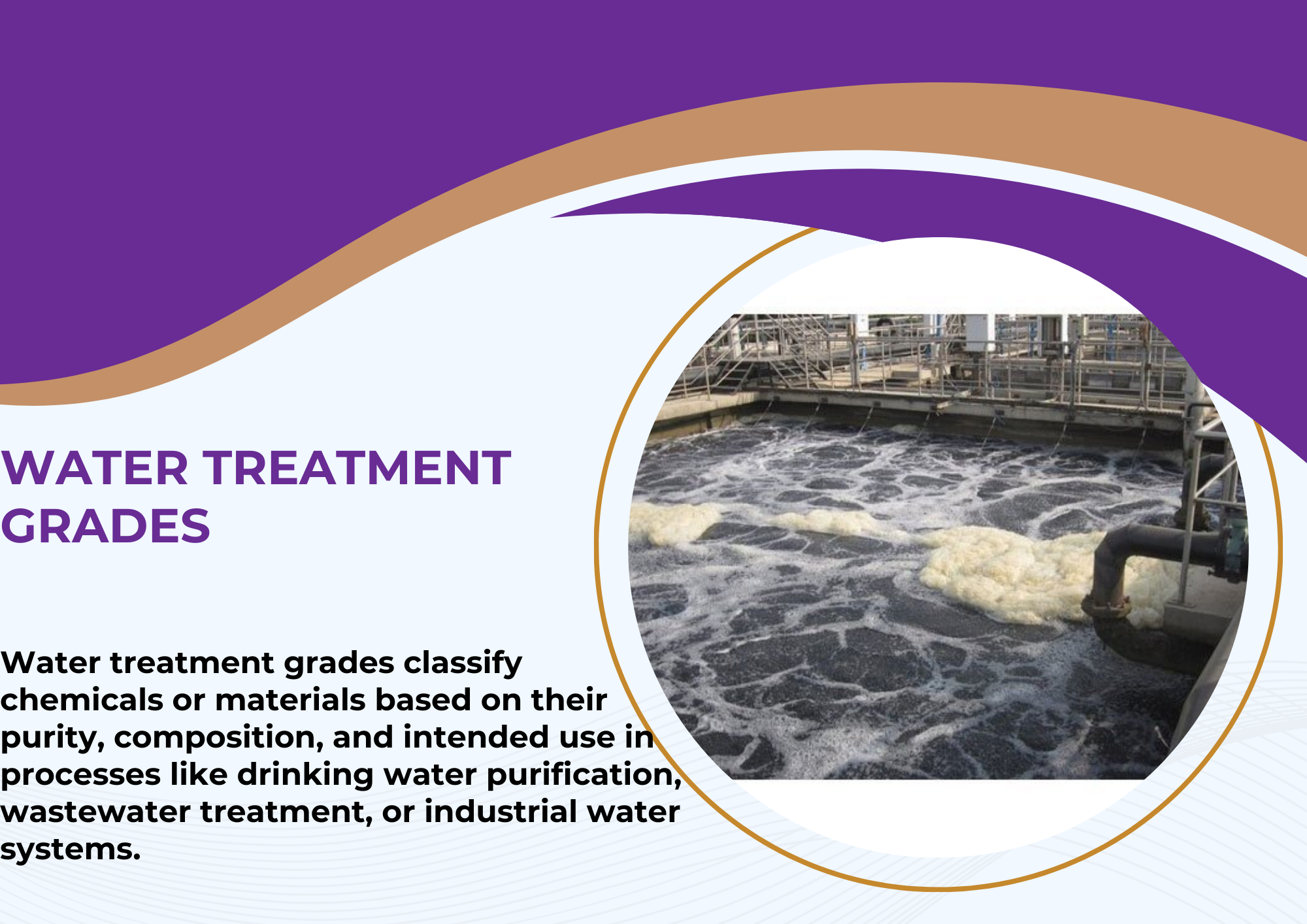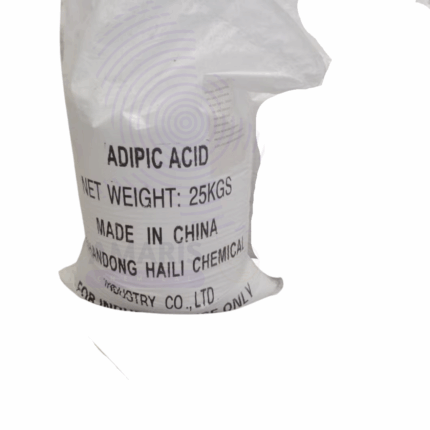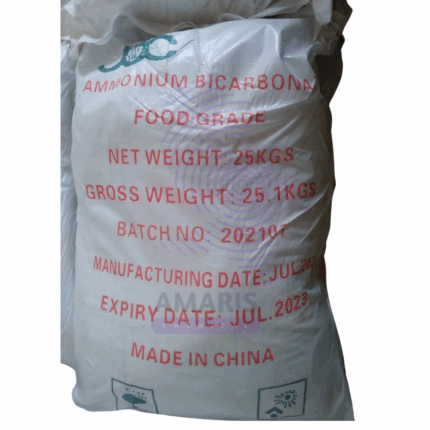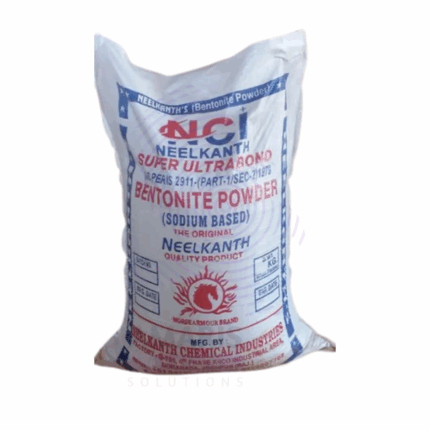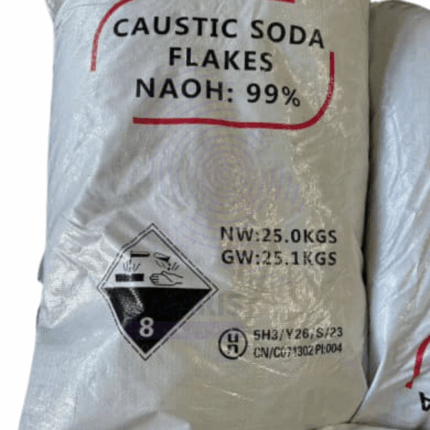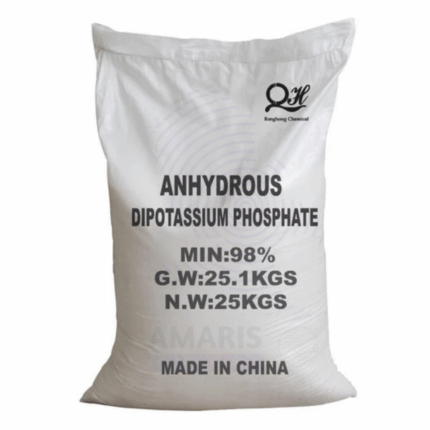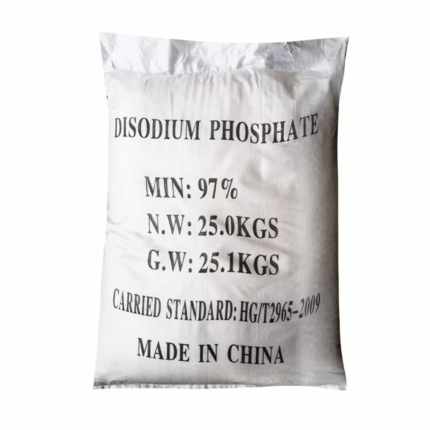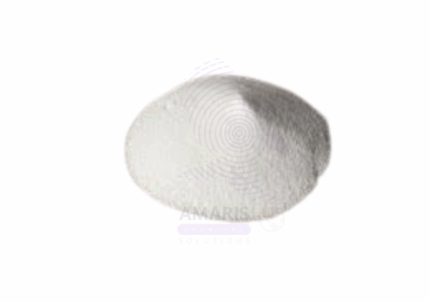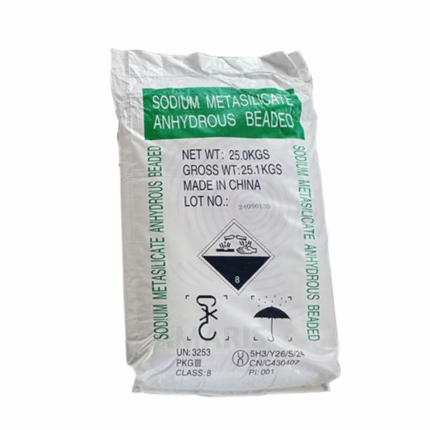Hydrochloric Acid
$ 1.00 Original price was: $ 1.00.$ 0.86Current price is: $ 0.86.
Whatsapp Order
Hydrochloric Acid HCL is a highly corrosive, strong mineral acid consisting of hydrogen chloride gas dissolved in water to a concentration of approximately 33% by weight. It appears as a clear, colorless to slightly yellow liquid with a sharp, pungent odor. HCl 33% is widely used in industrial, chemical, and laboratory applications due to its strong acidic properties, high reactivity, and versatility. It plays a crucial role in pH control, metal processing, chemical synthesis, and cleaning processes across numerous sectors.
Description
Table of Contents
Toggle
Hydrochloric Acid
Primary Uses
- Chemical Industry
- Used as a key reagent in the production of vinyl chloride monomer (VCM) for PVC manufacturing.
- Serves as a catalyst and reactant in numerous organic and inorganic synthesis processes.
- Employed for pH adjustment and acidification in chemical production.
- Metal Processing and Pickling
- Widely used for metal pickling and cleaning to remove rust, scale, and oxides from steel and iron surfaces before further processing or coating.
- Essential in ore processing and refining, especially for dissolving metal ores and recovering metals such as zinc and manganese.
- Water Treatment
- Used to neutralize alkaline water in municipal and industrial water treatment plants.
- Controls pH levels in swimming pools and cooling towers to prevent scale formation and microbial growth.
- Food Industry
- Utilized as a food-grade acidulant and processing aid for adjusting pH in the production of gelatin, ascorbic acid, and corn syrup.
- Used in cleaning and sanitization of food processing equipment under strict regulatory compliance.
- Oil and Gas Industry
- Employed in acidizing operations to stimulate oil and gas wells by dissolving carbonate formations and enhancing permeability.
- Household and Industrial Cleaning
- Active ingredient in many cleaning products for descaling, lime removal, and surface preparation.
Secondary Uses
- Pharmaceutical Industry
- Used in the synthesis of active pharmaceutical ingredients (APIs) and intermediates.
- Laboratory Applications
- Used as a standard reagent for acid-base titrations and pH calibration.
- Leather Industry
- Employed in leather processing for pH control and tanning operations.
Additional information
| PACK SIZE |
270kg |
|---|
KEY PRODUCT FEATURES
1. Basic Identification Attributes
- Chemical Name (IUPAC): Hydrochloric Acid
- Common/Trade Name: Hydrochloric Acid 33%
- CAS Number: 7647-01-0
- HS Code: 2806.10.00
- Molecular Formula: HCl (aqueous solution)
- Synonyms: Muriatic Acid; Hydrogen Chloride (aqueous)
2. Physical & Chemical Properties
- Physical State: Liquid
- Color & Odor: Clear, colorless to pale yellow; pungent, irritating odor
- Boiling Point: Approx. 110°C (for 33% solution)
- Density: ~1.16 g/cm³ at 20°C
- Solubility: Completely miscible with water
- pH: Strongly acidic (typically <1 for 33% solution)
- Stability: Stable under normal storage; reacts violently with bases and oxidizers
3. Safety & Hazard Attributes
- GHS Classification: Skin Corrosion 1B, Eye Damage 1, Acute Toxicity (Oral, Inhalation)
- Toxicity: Corrosive and highly irritant to skin, eyes, and respiratory tract
- Exposure Limits: OSHA PEL 5 ppm (7 mg/m³) ceiling limit
4. Storage & Handling Attributes
- Container Type: Corrosion-resistant containers such as HDPE or glass-lined steel drums
- Storage Conditions: Store in cool, dry, well-ventilated area away from incompatible materials like bases and oxidizers
- Shelf Life: Indefinite if stored properly in sealed containers
- Handling Notes: Use corrosion-resistant equipment and PPE; avoid inhalation of vapors
5. Regulatory & Compliance Attributes
- Approved for use in food processing as a processing aid under strict limits (food-grade HCl)
- Complies with FDA, REACH, and other global chemical safety regulations
- Subject to transportation regulations for corrosive substances
6. Environmental & Health Impact
- Biodegradability: Not applicable; neutralized quickly in environment
- Ecotoxicity: Harmful to aquatic life at high concentrations
- Bioaccumulation: Not expected
- Carcinogenicity/Mutagenicity: Not classified as carcinogenic
SAFETY HANDLING PRECAUTIONS
Safety Handling Precautions
- PPE Required: Acid-resistant gloves, face shield or goggles, acid-resistant apron, respirator if vapor exposure possible
- Handling Guidelines: Use in well-ventilated areas or fume hoods; avoid direct contact and inhalation
- Hygiene Practices: Wash hands thoroughly after use; do not eat, drink, or smoke while handling
First Aid Measures
- Inhalation: Move to fresh air immediately; provide artificial respiration if needed; seek medical attention promptly
- Skin Contact: Rinse immediately with copious water for at least 15 minutes; remove contaminated clothing; seek urgent medical care
- Eye Contact: Rinse eyes thoroughly with water for 15-20 minutes; seek immediate ophthalmologic consultation
- Ingestion: Do NOT induce vomiting; rinse mouth; seek emergency medical help immediately
Firefighting Measures
- Fire Hazards: Non-flammable but can release toxic hydrogen chloride gas when heated or reacting with metals
- Extinguishing Media: Use water spray, foam, dry chemical, or CO₂ for surrounding fires
- Special Precautions: Firefighters should wear self-contained breathing apparatus and acid-resistant clothing
- Combustion Products: Hydrogen chloride gas and corrosive fumes
Related products
Adipic Acid
$ 3.20
Ammonium Bicarbonate
Ammonium bicarbonate is a white crystalline powder or granules with a slightly alkaline taste and a characteristic ammoniacal odor. It is a white solid that decomposes readily on heating, releasing ammonia, carbon dioxide, and water vapor. It is widely used in the food industry as a leavening agent, in chemical synthesis, and in various industrial applications. Its unique property of decomposing to release gases makes it valuable for baking and other processes where gas release is desired.
Bentonite Powder
Bentonite powder is a naturally occurring absorbent clay primarily composed of montmorillonite, a type of smectite clay mineral. It exhibits excellent swelling and water absorption properties, making it highly versatile in industrial and commercial applications. Bentonite forms a gel-like substance when mixed with water, which imparts viscosity and plasticity. It is used extensively for its binding, sealing, and adsorptive characteristics. Its fine powder form allows for easy incorporation in various processes including drilling, foundry, cosmetics, pharmaceuticals, and agriculture.
Caustic Soda Flakes (Sodium Hydroxide)
Caustic Soda Flakes, also known as Sodium Hydroxide Flakes (NaOH), are a highly alkaline, white, solid substance that is crystalline and flaky in form. Produced by evaporating aqueous sodium hydroxide solutions, these flakes are highly soluble in water and exhibit strong corrosive properties. Caustic Soda Flakes are widely used in a variety of industrial, chemical, and manufacturing processes due to their strong alkalinity, ability to saponify fats, and effectiveness in pH adjustment. Their high purity and ease of handling in flake form make them suitable for use in chemical synthesis, pulp and paper production, water treatment, and detergent manufacturing.
Dipotassium Hydrogen Phosphate
Dipotassium Hydrogen Phosphate (also known as dipotassium phosphate, DKP) is an inorganic salt used widely as a buffering agent, emulsifier, and nutritional supplement in various industries. It is a white, crystalline, highly water-soluble powder with alkaline properties. DKP plays a vital role in food processing, pharmaceuticals, water treatment, and agriculture due to its ability to stabilize pH, improve texture, and supply essential potassium and phosphate ions.
Disodium Phosphate
Disodium Phosphate, also known as sodium phosphate dibasic, is an inorganic compound widely used for its buffering, emulsifying, and chelating properties. It commonly appears as a white, odorless crystalline powder or granules that are highly soluble in water and alkaline in nature. Disodium Phosphate plays a vital role in regulating pH, improving stability in formulations, and providing essential sodium and phosphate ions. It finds extensive use across food processing, pharmaceuticals, water treatment, agriculture, and industrial applications.
Sodium Disilicate
Sodium Disilicate, commonly supplied in granular or powder form, is an alkaline, water-soluble compound used widely in industrial applications. It functions primarily as a binder, adhesive, and corrosion inhibitor. Its high alkalinity and silicate content make it effective in detergents, water treatment, and cement manufacturing. Sodium Disilicate is valued for its ability to improve strength and durability of materials, as well as its effectiveness in cleaning and stabilizing processes.
Sodium Metasilicate Anhydrous
Sodium Metasilicate Anhydrous is a white crystalline solid known for its alkaline properties and high solubility in water. It is widely used in industrial cleaning, detergent formulations, water treatment, and as a corrosion inhibitor. The anhydrous form is preferred where moisture sensitivity is a concern. It acts as a strong alkaline builder, improving the effectiveness of detergents and degreasers. This product is also used in adhesives, cement, and ceramics due to its binding and strengthening properties.


 Preservatives(food)
Preservatives(food) Flavor Enhancers
Flavor Enhancers Acidulants
Acidulants Sweeteners
Sweeteners Antioxidants
Antioxidants Colorants(food)
Colorants(food) Nutraceutical Ingredients (food)
Nutraceutical Ingredients (food) Nutrient Supplements
Nutrient Supplements Emulsifiers
Emulsifiers
 Collectors
Collectors Dust Suppressants
Dust Suppressants Explosives and Blasting Agents
Explosives and Blasting Agents Flocculants and Coagulants
Flocculants and Coagulants Frothers
Frothers Leaching Agents
Leaching Agents pH Modifiers
pH Modifiers Precious Metal Extraction Agents
Precious Metal Extraction Agents
 Antioxidants(plastic)
Antioxidants(plastic) Colorants (Pigments, Dyes)
Colorants (Pigments, Dyes) Fillers and Reinforcements
Fillers and Reinforcements Flame Retardants
Flame Retardants Monomers
Monomers Plasticizers
Plasticizers Polymerization Initiators
Polymerization Initiators Stabilizers (UV, Heat)
Stabilizers (UV, Heat)
 Antifoaming Agents
Antifoaming Agents Chelating Agents
Chelating Agents Coagulants and Flocculants
Coagulants and Flocculants Corrosion Inhibitors
Corrosion Inhibitors Disinfectants and Biocides
Disinfectants and Biocides Oxidizing Agents
Oxidizing Agents pH Adjusters
pH Adjusters Scale Inhibitors( water)
Scale Inhibitors( water)
 Antioxidants(cosmetic)
Antioxidants(cosmetic) Emollients
Emollients Fragrances and Essential Oils
Fragrances and Essential Oils Humectants
Humectants Preservatives
Preservatives Surfactants(cosmetic)
Surfactants(cosmetic) Thickeners
Thickeners UV Filters
UV Filters
 Fertilizers
Fertilizers Soil Conditioners
Soil Conditioners Plant Growth Regulators
Plant Growth Regulators Animal Feed Additives
Animal Feed Additives Biostimulants
Biostimulants Pesticides (Herbicides, Insecticides, Fungicides)
Pesticides (Herbicides, Insecticides, Fungicides)
 Active Pharmaceutical Ingredients (APIs)
Active Pharmaceutical Ingredients (APIs) Excipients
Excipients Solvents(pharmaceutical)
Solvents(pharmaceutical) Antibiotics
Antibiotics Antiseptics and Disinfectants
Antiseptics and Disinfectants Vaccine Adjuvants
Vaccine Adjuvants Nutraceutical Ingredients (pharmaceutical)
Nutraceutical Ingredients (pharmaceutical) Analgesics & Antipyretics
Analgesics & Antipyretics
 Analytical Reagents
Analytical Reagents Solvents(lab)
Solvents(lab) Chromatography Chemicals
Chromatography Chemicals Spectroscopy Reagents
Spectroscopy Reagents microbiology-and-cell-culture-reagents
microbiology-and-cell-culture-reagents Molecular Biology Reagents
Molecular Biology Reagents Biochemical Reagents
Biochemical Reagents Inorganic and Organic Standards
Inorganic and Organic Standards Laboratory Safety Chemicals
Laboratory Safety Chemicals Specialty Laboratory Chemicals(Special Laboratory Equipment)
Specialty Laboratory Chemicals(Special Laboratory Equipment)
 Demulsifiers
Demulsifiers Hydraulic Fracturing Fluids
Hydraulic Fracturing Fluids Scale Inhibitors(oil)
Scale Inhibitors(oil) Surfactants(oil)
Surfactants(oil) Drilling Fluids
Drilling Fluids
 Dyes and Pigments
Dyes and Pigments Bleaching Agents
Bleaching Agents Softening Agents
Softening Agents Finishing Agents
Finishing Agents Antistatic Agents
Antistatic Agents
 Admixtures
Admixtures Waterproofing Agents
Waterproofing Agents Sealants and Adhesives
Sealants and Adhesives Curing Compounds
Curing Compounds Concrete Repair Chemicals
Concrete Repair Chemicals Anti-Corrosion Coatings
Anti-Corrosion Coatings
 Surfactants(cleaning)
Surfactants(cleaning) Builders
Builders Enzymes
Enzymes Solvents (Cleaning)
Solvents (Cleaning) Fragrances
Fragrances
 Electronic Chemicals
Electronic Chemicals Catalysts
Catalysts Lubricants
Lubricants Photographic Chemicals
Photographic Chemicals Refrigerants
Refrigerants Automotive chemicals
Automotive chemicals Pyrotechnic Chemicals
Pyrotechnic Chemicals
 Biodegradable Surfactants
Biodegradable Surfactants Bio-based Solvents
Bio-based Solvents Renewable Polymers
Renewable Polymers Carbon Capture Chemicals
Carbon Capture Chemicals Wastewater Treatment Chemicals
Wastewater Treatment Chemicals
 Pigments
Pigments Solvents(paint)
Solvents(paint) Specialty Coatings
Specialty Coatings Binders/Resins
Binders/Resins Additives
Additives Driers
Driers Anti-Corrosion Agents
Anti-Corrosion Agents Functional Coatings
Functional Coatings Application-Specific Coatings
Application-Specific Coatings
 Fresh Herbs
Fresh Herbs Ground Spices
Ground Spices Whole Spices
Whole Spices Spice Blends
Spice Blends Dried Herbs
Dried Herbs
 Leavening Agents
Leavening Agents Dough Conditioners
Dough Conditioners Flour Treatments
Flour Treatments Fat Replacers
Fat Replacers Decoratives
Decoratives Preservatives(baking)
Preservatives(baking)
 Plasticizers & Softeners
Plasticizers & Softeners Reinforcing Agents
Reinforcing Agents Adhesion Promoters
Adhesion Promoters Vulcanizing Agents
Vulcanizing Agents Antidegradants
Antidegradants Blowing Agents
Blowing Agents Fillers & Extenders
Fillers & Extenders Accelerators & Retarders
Accelerators & Retarders